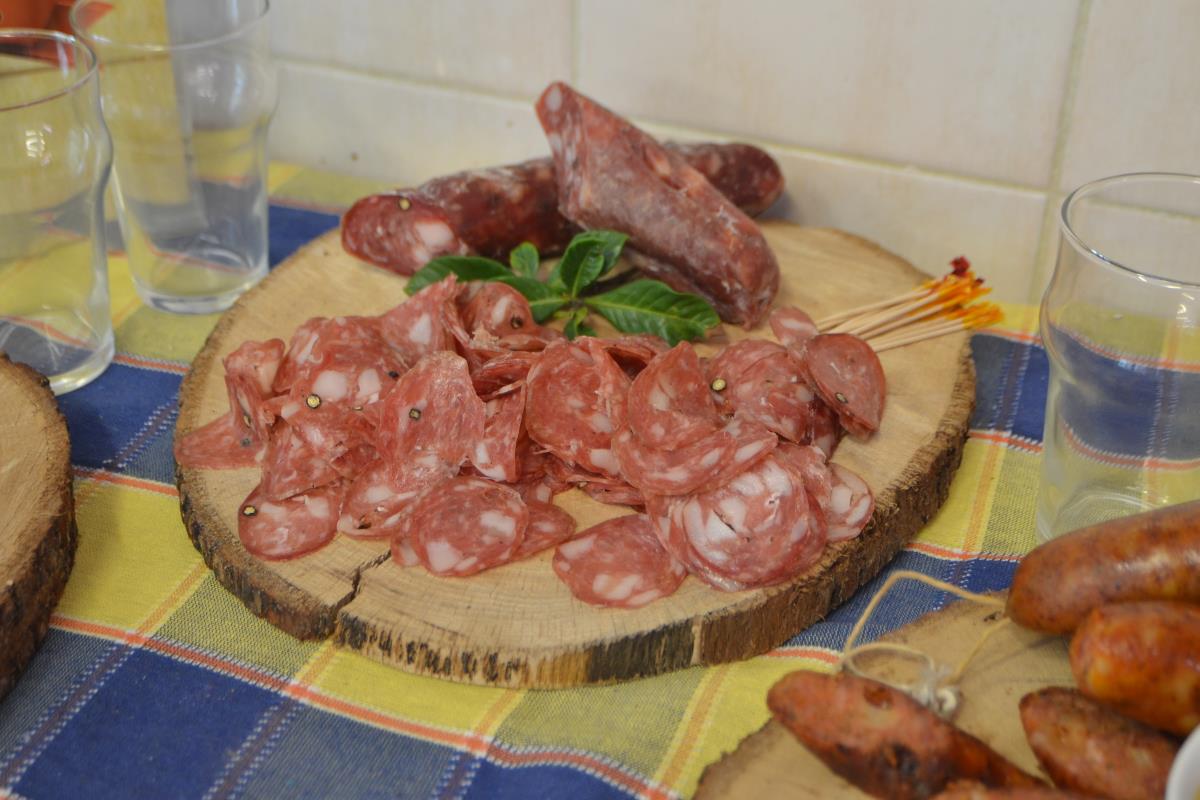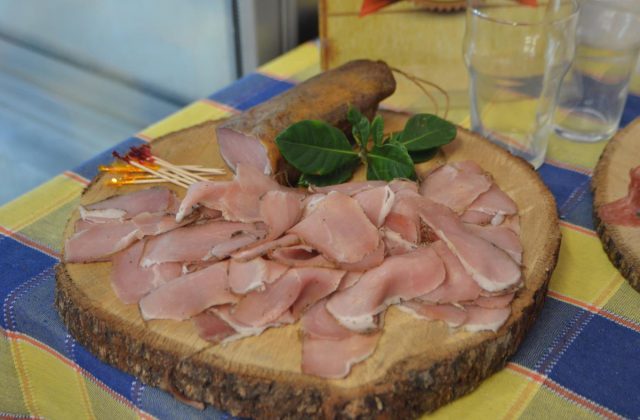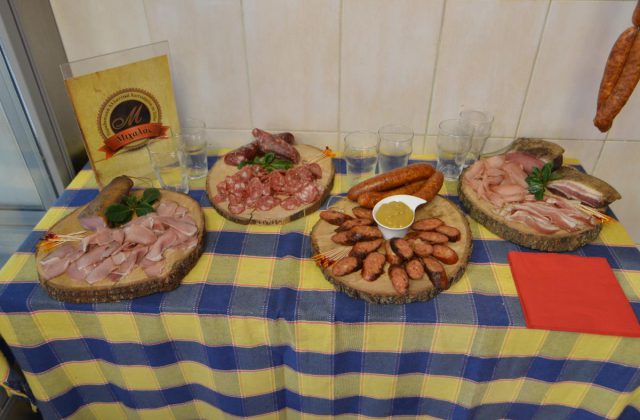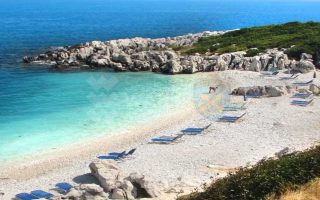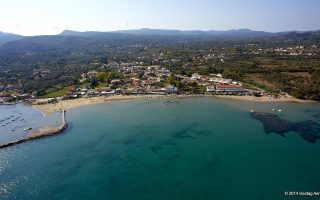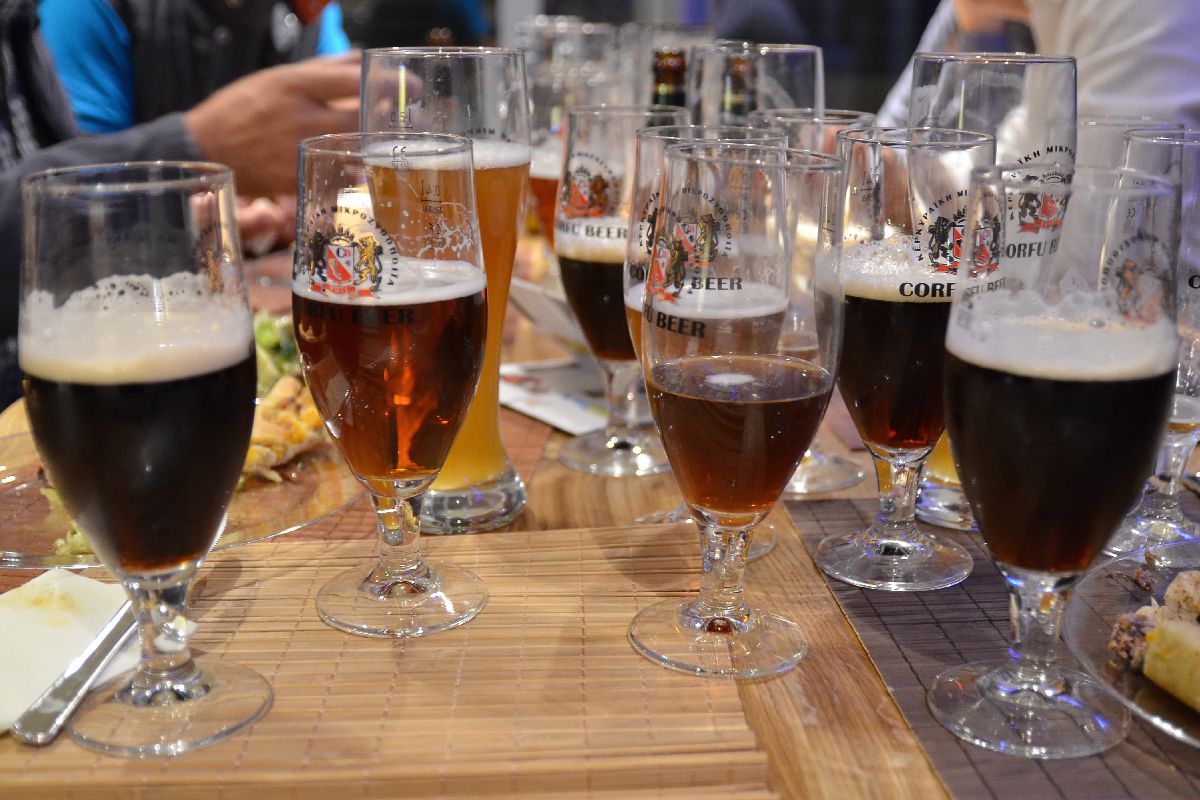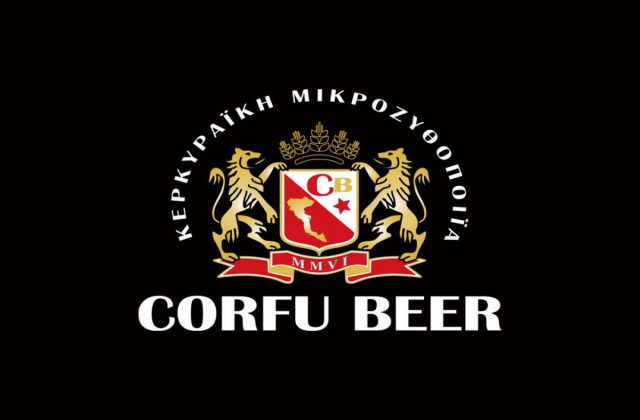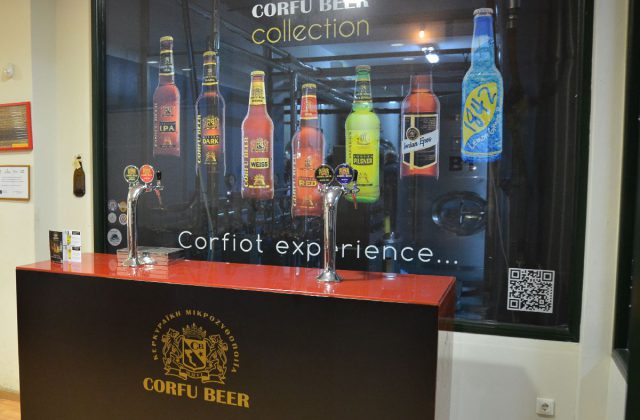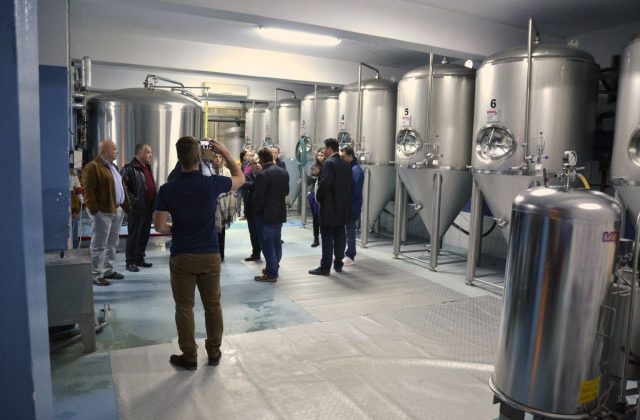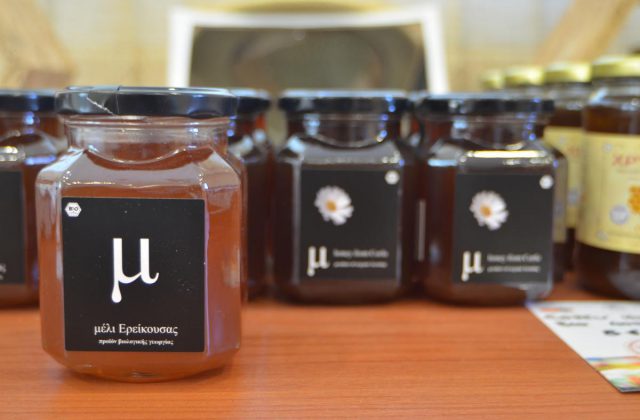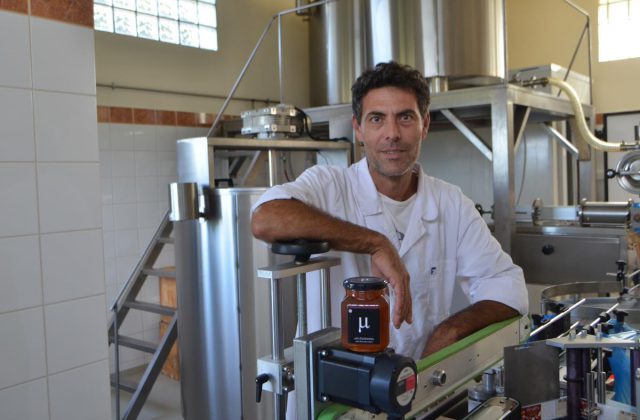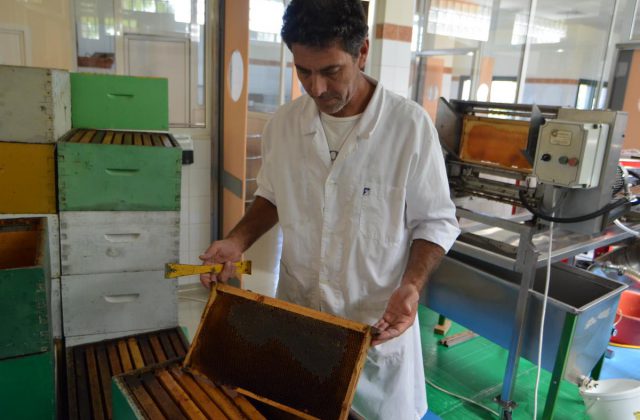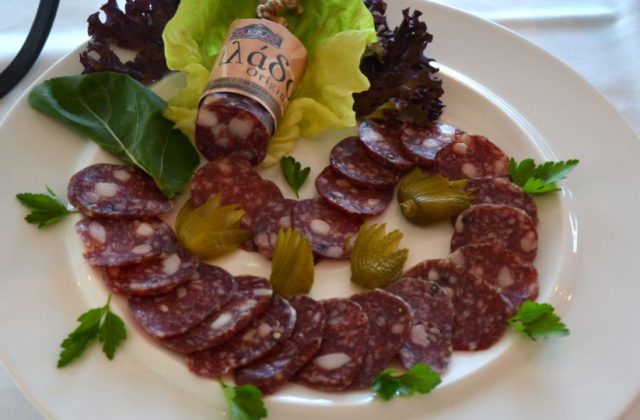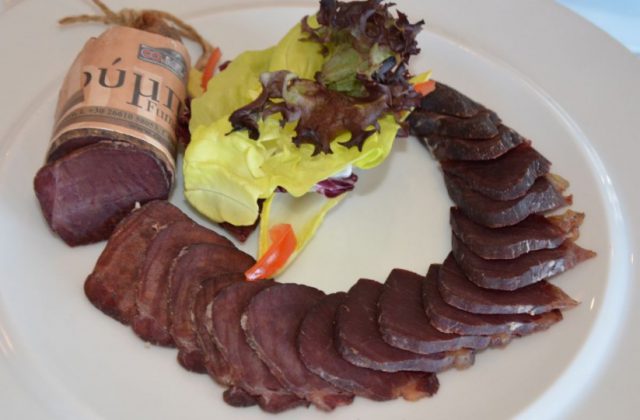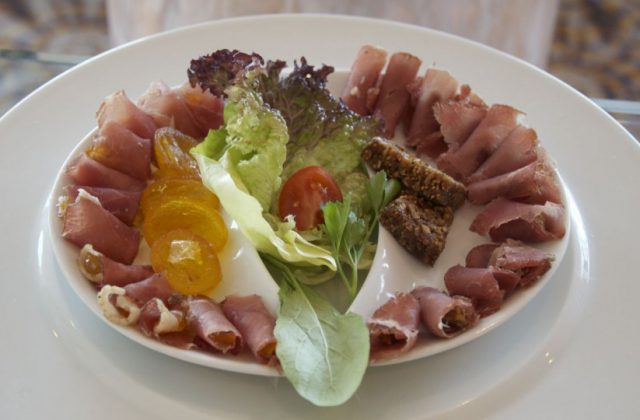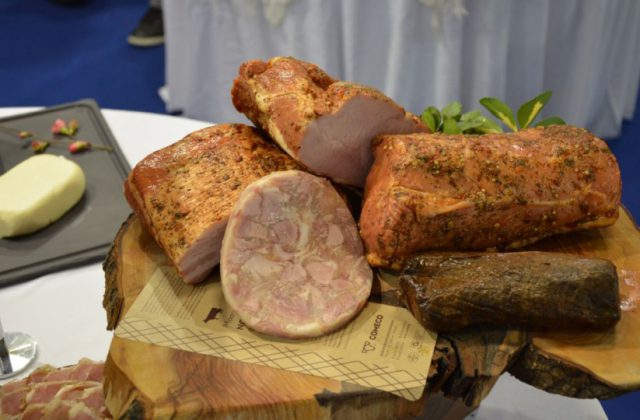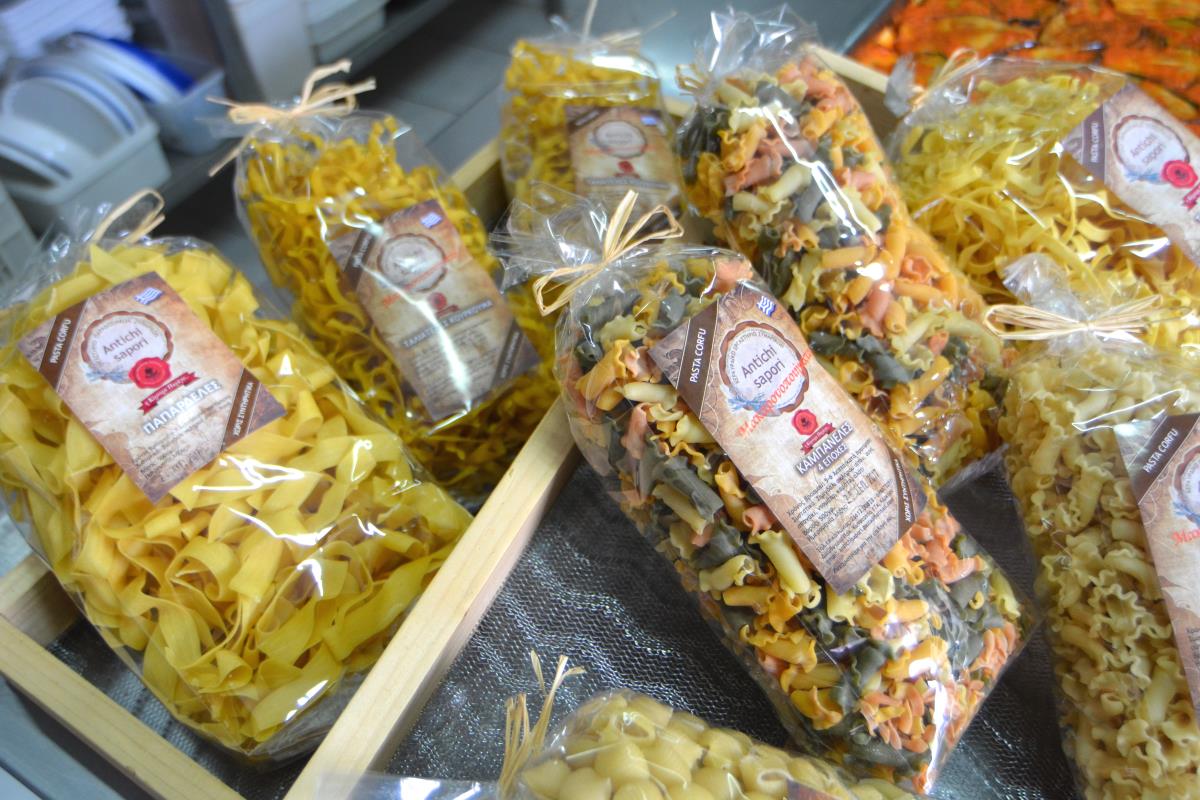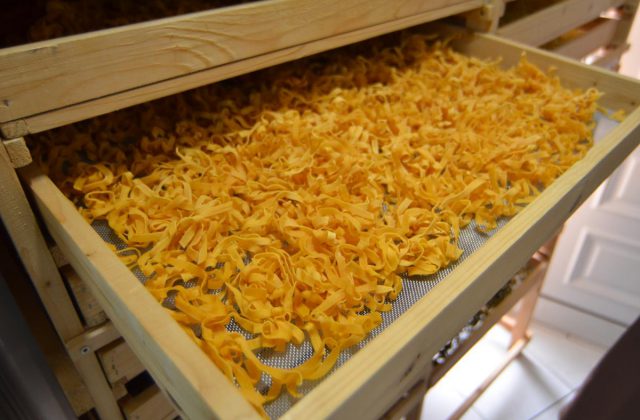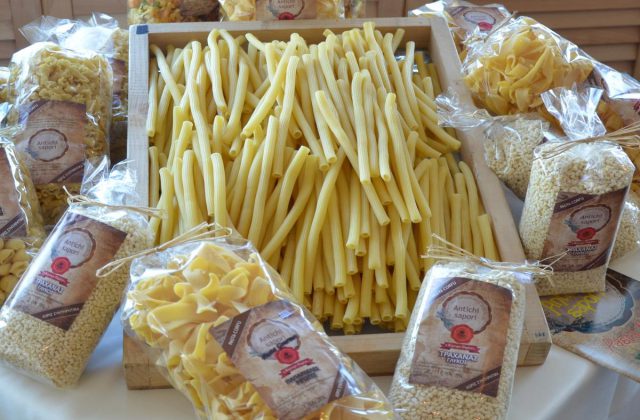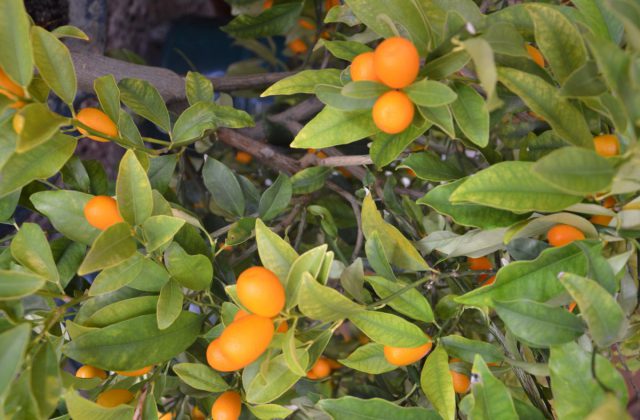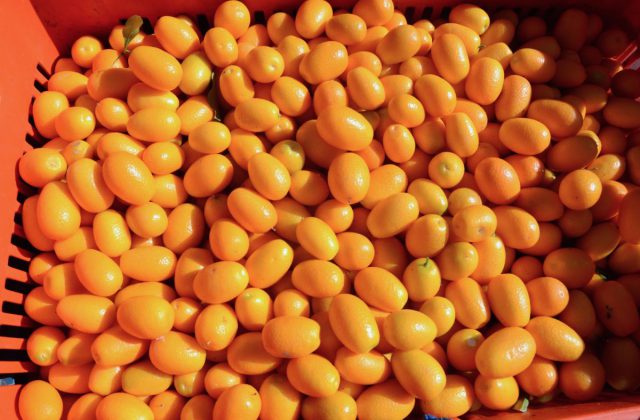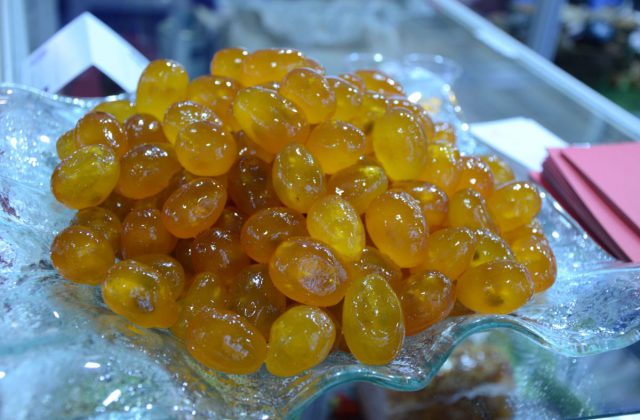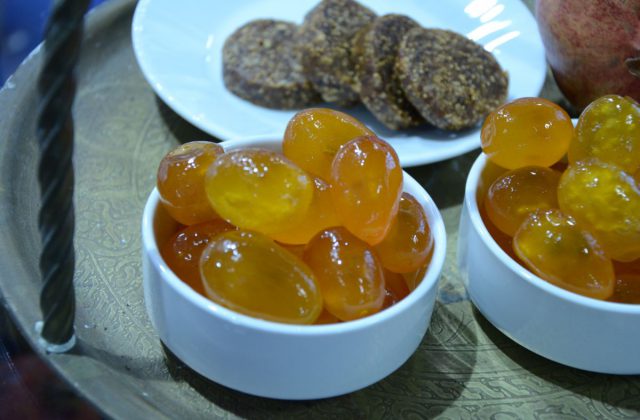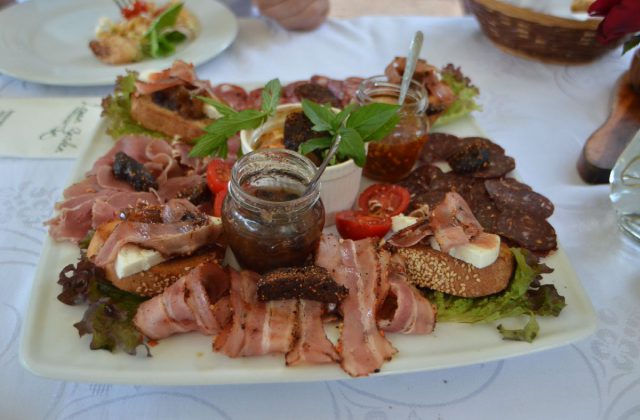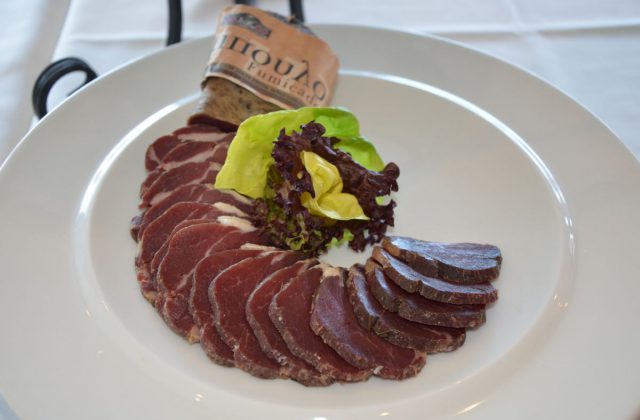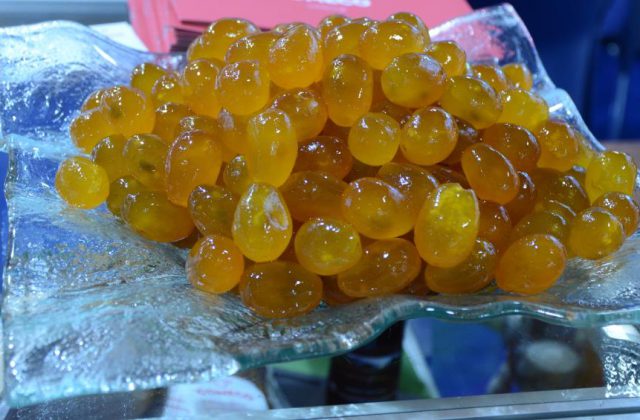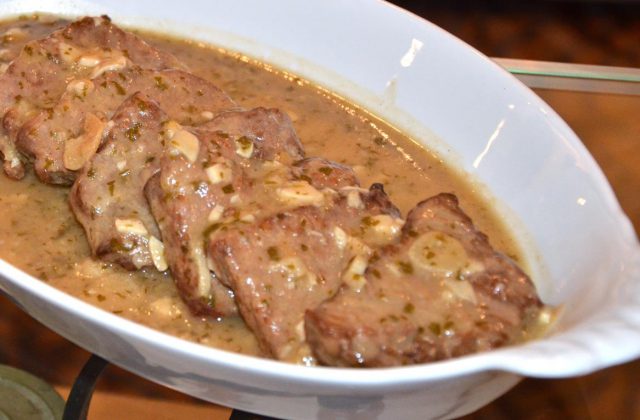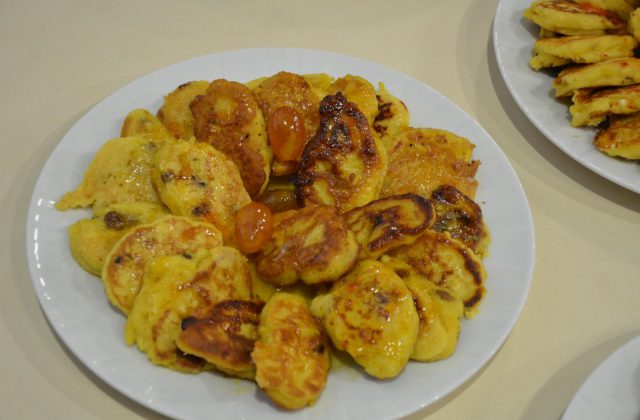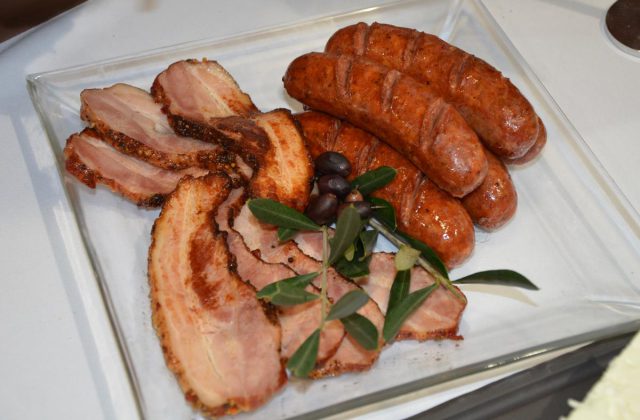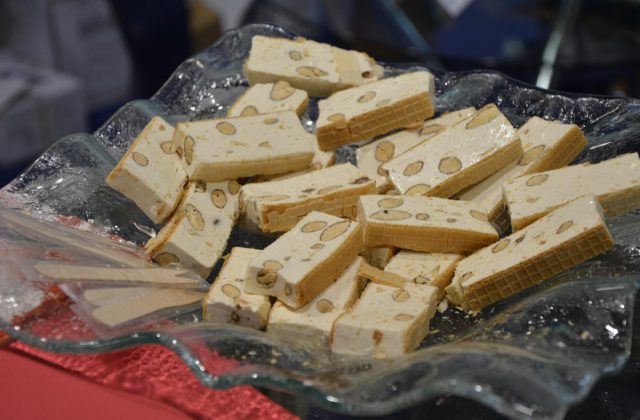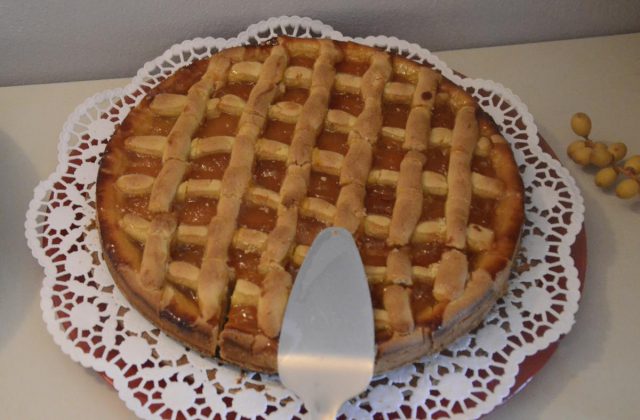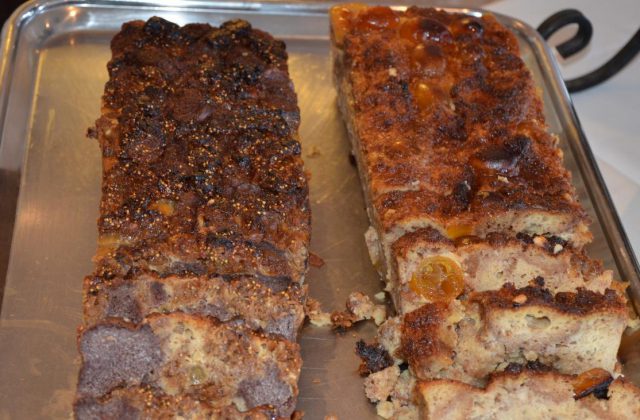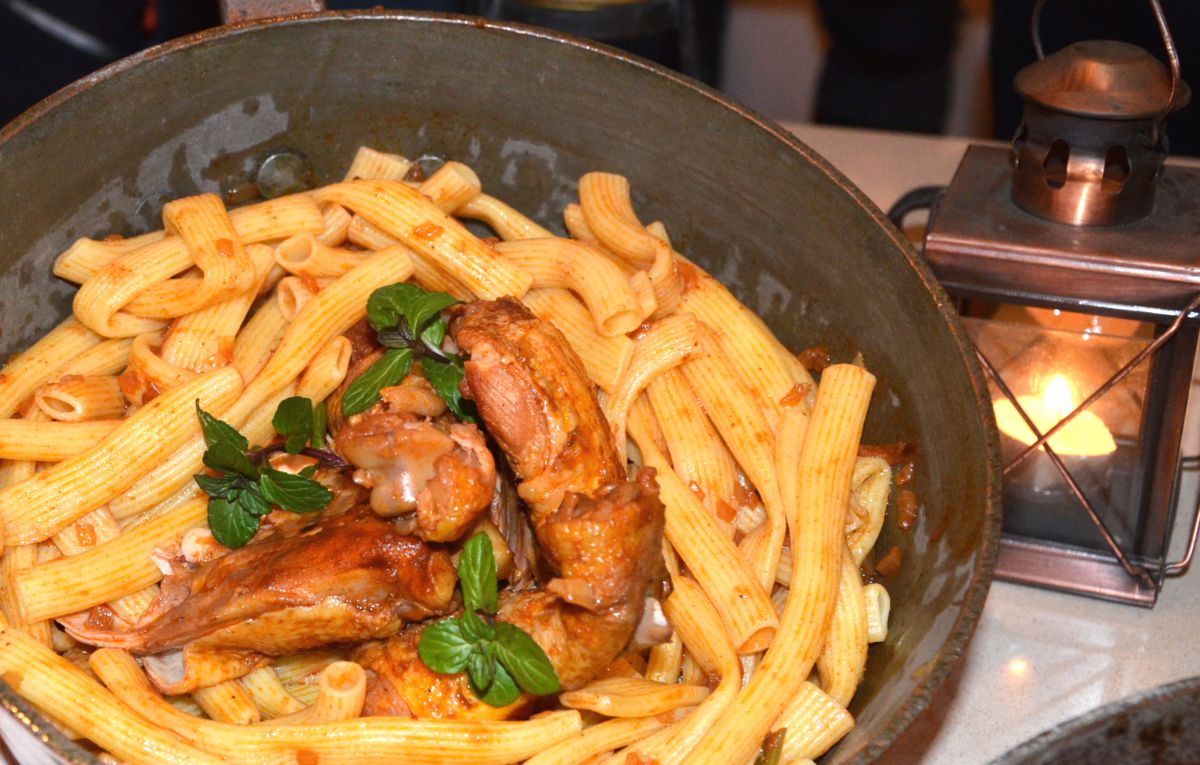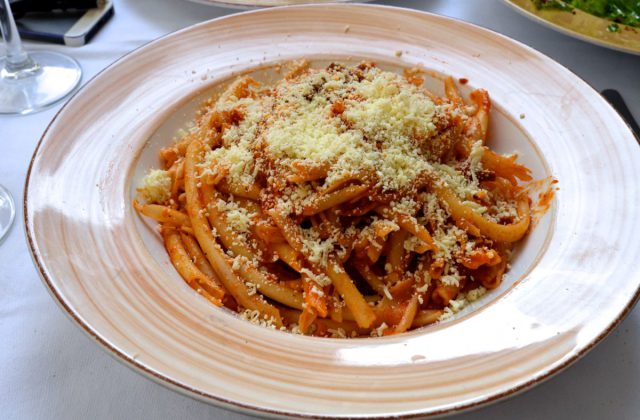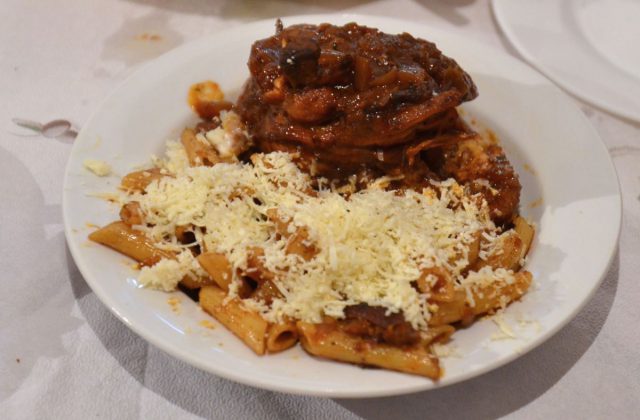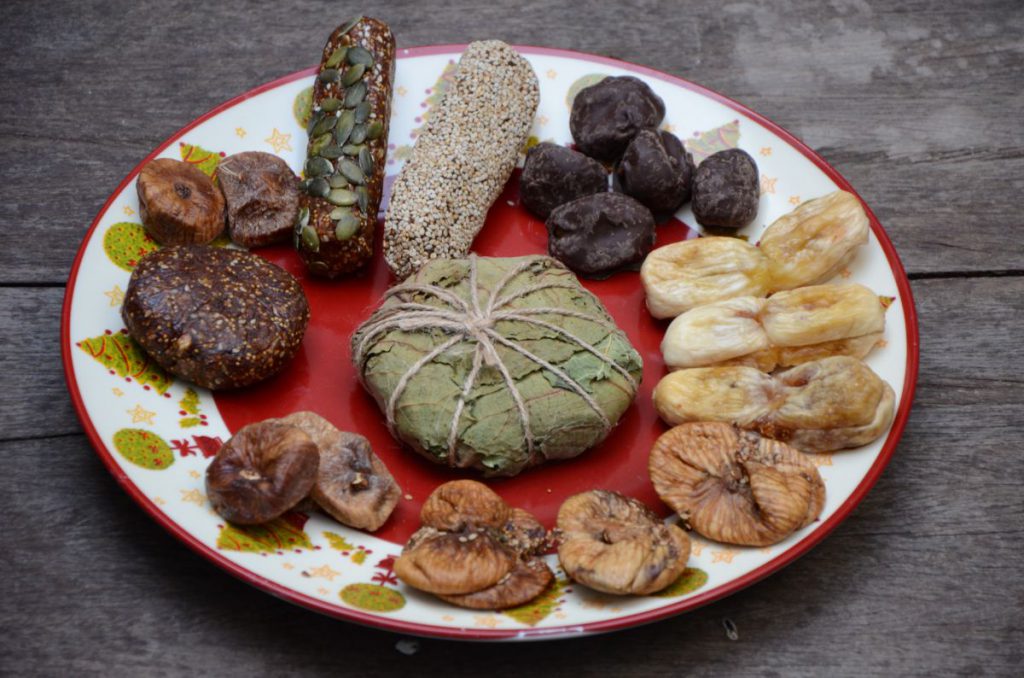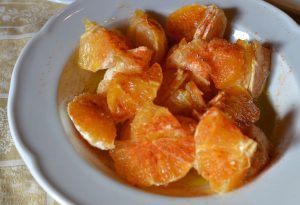Traditional Wood-Smoked Cold Cuts
Michalas Cold Cuts is a family enterprise located near Doukades in Corfu.
It got its start in 1981 as a one-man operation producing the local salami (salado) in the village of Lakones, and later evolved into a family business. As a company, it always abides by the most stringent hygiene standards, while placing emphasis on fresh meat and natural methods of curing and age-old techniques of binding sausage.
Μore at Greek Gastronomy Guide…
Source: www.greekgastronomyguide.gr
Corfiot Microbrewery
The Corfiot Microbrewery was founded in 2006 by Spyros Kaloudis at Arillas in the northwest of Corfu, 35 kilometers from Corfu Town. In 2009 its first beers appeared on the market; by the following year, production had reached 100,000 liters, and in 2015, six years later, that figure has increased six-fold, making the company one of the most dynamic microbreweries in Greece.
The beers of Corfu Beer all belong to the category of Real Ale – a live product naturally brewed – whose fermentation and maturation take place in special vats over a period of several weeks with no stabilizers, artificial coloring or other chemical additives. They appeal to all tastes and must be kept refrigerated for their ‘shelf life’ is short.
Μore at Greek Gastronomy Guide…
Source: www.greekgastronomyguide.gr
Panagiotis Vasilakis’ honey company “MKV – Melissokomiki Kerkyras Vasilakis” is based in Vatos in NW Corfu.
This model plant, the pride of the island, was completed in 2007 and includes 350 m2 of buildings, processing equipment, a chemistry lab and packaging technology. It produces certified organic honey, pollen, royal jelly and comb honey, with the quality and hygiene assurance system HACCP certified by ISO22000.
Panagiotis Vasilakis was born in Athens and was a technical consultant with Opel until 2001 when he decided he wanted to change his life and occupation.
Μore at Greek Gastronomy Guide…
Source: www.greekgastronomyguide.gr
The Corfu Meat Company S.A., abbreviated COMECO S.A., was founded in Corfu by the Lavranos family.
The company began operating in the meat and cured meat sector in 2001, using state of the art equipment and today is the largest on Corfu and one of the strongest in Greece. All of COMECO’s products are subject to stringent quality control as the company is certified with the food safety system ISO 22000:2005. Its range includes, among others, local products of the island.
Μore at Greek Gastronomy Guide…
Source: www.greekgastronomyguide.gr
In 2009, Corfu Town acquired its first fresh pasta shop. It has a curious name, “Makaronopiimata Pasta Corfu“, which translated means Macaroni Creations.
At the shop, 17 Polychroniou Street, you’ll find a full range of fresh pasta from spaghetti to tagliatelle, papardelle, tagliolini, ravioli, elbow macaroni, lasagna, canneloni and more, in many different shapes and flavours. All the products are prepared in the traditional way, with particular attention and care, using only the finest ingredients – durum wheat flour, eggs, salt, milk, carrots, spinach, tomatoes – with no preservatives or additives. The plant where their dry pasta is produced lies to the north of the island at Agios Athanasios, but all the fresh pasta is made at the shop in town.
Μore at Greek Gastronomy Guide…
Source: www.greekgastronomyguide.gr
KUMQUAT
The kumquat is a citrus fruit originating from China where it has been cultivated since the 12th century. It was first brought to Europe by Robert Fortune, a botanist of the Royal Horticultural Society. Kumquat means “Golden Orange” in Chinese.
It grows to about four metres in height and is cultivated in temperate and subtropical climes for its fruit but also as a decorative indoor plant. Its leaves are dark green, bayonet shaped and its flower similar to that of the orange tree. Its fruit is either round or egg shaped depending on the variety and reaches a diameter of about four cm.
NOUMBOULO
Four hundred years of Venetian Rule left, among many other things, a legacy in the traditional production of cold cuts. In those days, preserved meats were prepared by butchers in charge of processing meat from chirosfagia, an annual ancient custom of pig slaughtering.
Among the specialties of cold cuts, such as salami (salada), blood sausage or black pudding (bourdounia), headcheese or brawn (pichti), sopresada (similar to brawn), smoked ham (hiromeri fumicado), and sausages, the Corfiot smoked pork fillet (noumboulo fumicado), also called Corfiot prosciutto, was and still is Corfu’s most popular cold cut.
Μore at Greek Gastronomy Guide…
Source: www.greekgastronomyguide.gr
The traditional cuisine of Corfu includes delicacies that will appeal to both the ordinary traveller as well as the most demanding gourmet. They are special flavours that are linked to the place and shape the gastronomic experience typical of the island.
Some dishes may have faded into oblivion or may be found only in a few little tavernas or in homes, but most of these, fortunately, are served at most of the island’s restaurants.
Wild greens. Typical food of rural families. Boiled wild greens in a deep bowl with their broth, and lots of lemon juice and good olive oil.
Corfou. A local cow’s cheese with a particular tang. It was not produced in Corfu until the 1960s, and used the Italian pecorino as a prototype.
Boiled hen with stuffing. A traditional New Year’s dish. After the hen or chicken has been boiled, it is then stuffed with chopped beef, bacon, eggs, thyme, cheese, garlic, oil, parsley and spices, and roasted in the oven.
Eggplant pastrokio. Fried eggplant, layered with cheese and baked with sliced boiled eggs, pancetta, salami, and covered with a tomato-basil sauce.
Salt cod with aioli (garlic sauce). Salted cod, soaked to remove the salt, with garlic sauce, agiada from the Italian aglio – skordalia in Greek – which apart from the usual bread and olive oil also contains blanched almonds and vinegar.
Banketa. Marzipan/crushed almond sweet with tangerine peel, dusted with confectioner’s sugar.
Bianco, from the Italian for white. A way of cooking fish with garlic, parsley, lemon juice, onions, and potatoes. In other words, white or without tomatoes.
Bourdeto. A Corfiot recipe for fish cooked with sauteed onion, a light tomato sauce and a powerful pinch of hot red pepper quenched with lemon juice. Especially recommended for scorpion fish, cod, skate, grouper, and smaller, firm fleshed fish.
Source: www.greekgastronomyguide.gr
PASTITSADA
Pastitsada, one of the signature dishes of Corfu, is not just another stew with tomatoes and a few spices. Preparing this favourite Sunday fare of most Corfiot families is an elaborate ritual and every housewife has her own recipe. For those who are not familiar with it, this flaming red dish derives its colour from the healthy amount of hot paprika added to the meat even before any tomatoes are introduced. The whole art of mixing the spices – spetsieriko – that go into it developed exclusively from the desire to enhance the taste of pastitsada. At Karmela’s pharmacy in Saroko the mix contains no less than 15 seasonings.
SYKOMAIDA
Sykomaida, literally fig paste or fig bread, is one of the most characteristic specialities of Corfu. Its name is a compound of the Greek word for fig (syko) and mágis, an Ancient Greek word for dough, paste or cake.
Although figs grow in practically every corner of Greece, and most famously and prolifically in Kalamata in the Peloponnese and Kymi on the east coast of Evia, sykomaida as described below is rarely found anywhere except Corfu. In the old days, farmers used to come into town on their donkeys to sell these round fig patties; they were a great favorite among the city dwellers.
ΝERANTZOSALATA (ORANGE SALAD)
In Italian, ‘naranza’ means orange – as opposed to the Greek ‘nerantzi’, which means bitter or Seville orange. Thus when the Corfiots speak of ‘nerantzosalata’, as a result of many centuries of Italian rule, they mean orange salad.
A dish which seems to have been widespread in Corfu, the recipe appears in Ninetta Laskari’s marvelous book, Corfu, A Glance through Time, 1204-1864, in the Corfiot dialect:
“Kόφτουμε φτενάδες στρογγυλές τα νεράντζια-παστρεμένα-μέσα στο γαδίνι για να μην πελληθεί το ζωμί. Ρίχνομε λάδι-πες και βάλε κάνια μεσόκουπα- κοκκινοπίπερο πολύο και τότσο αλάτι”.
Source: www.greekgastronomyguide.gr

